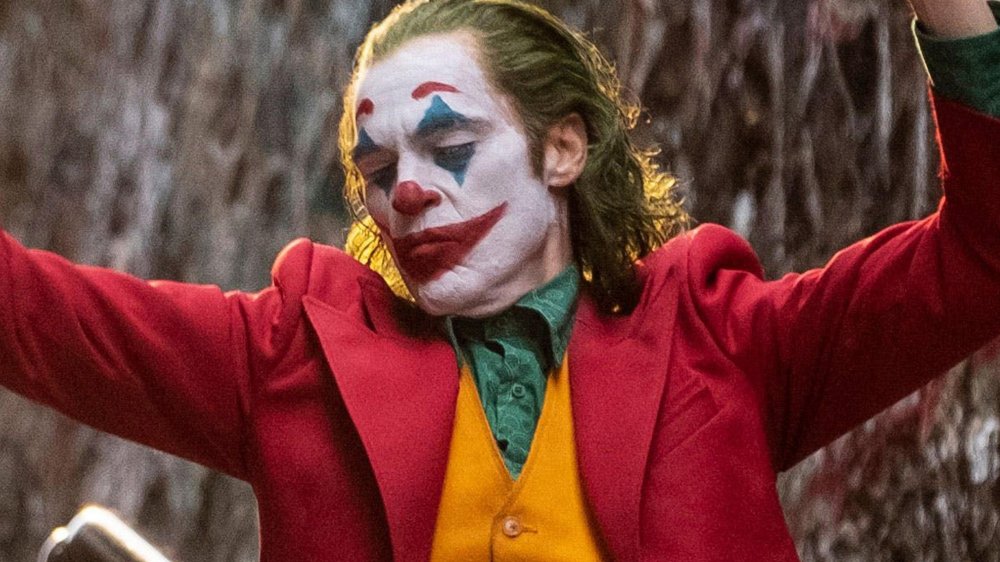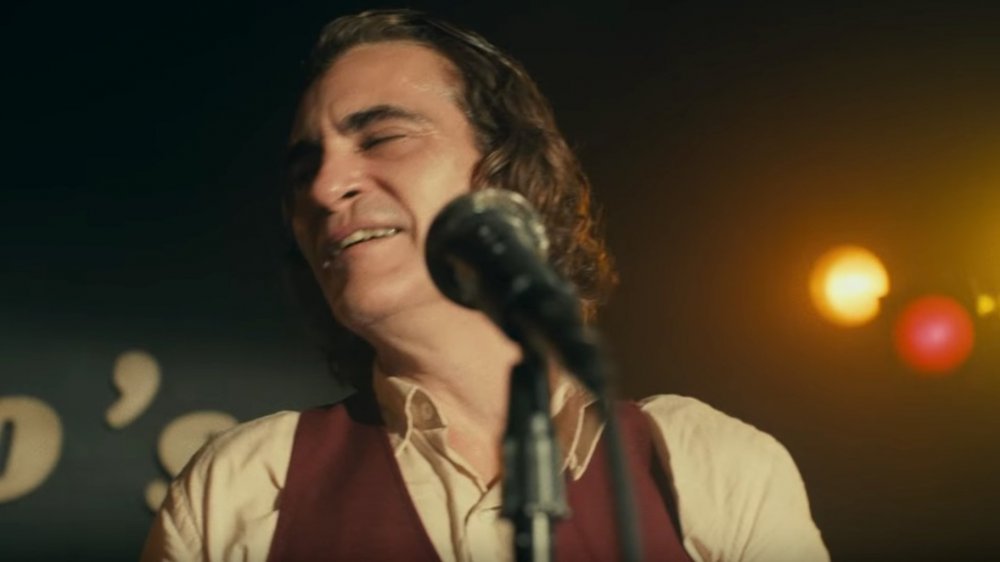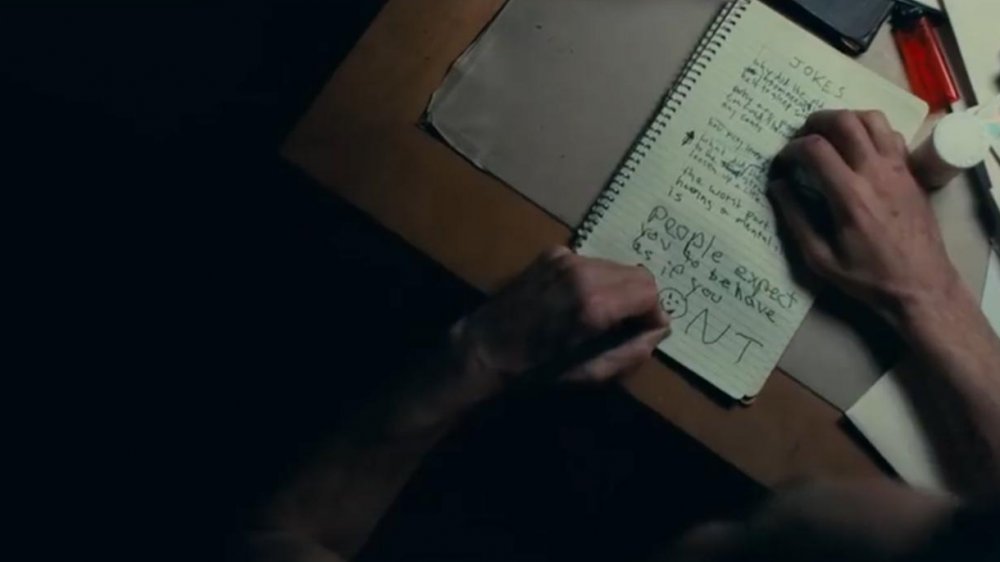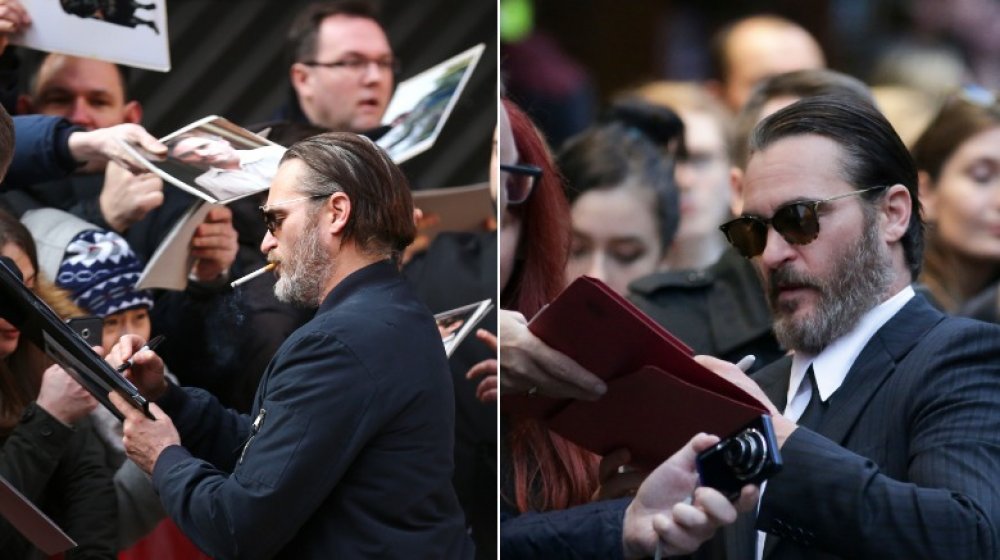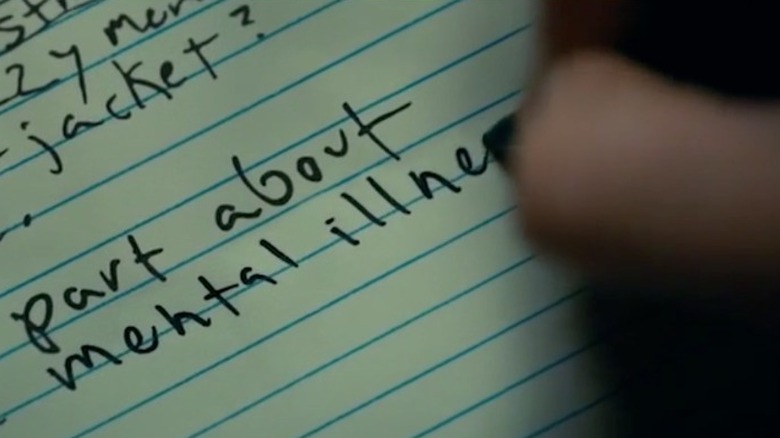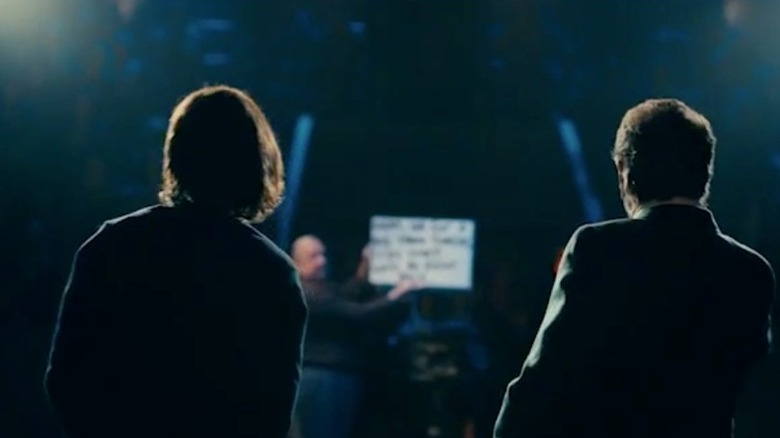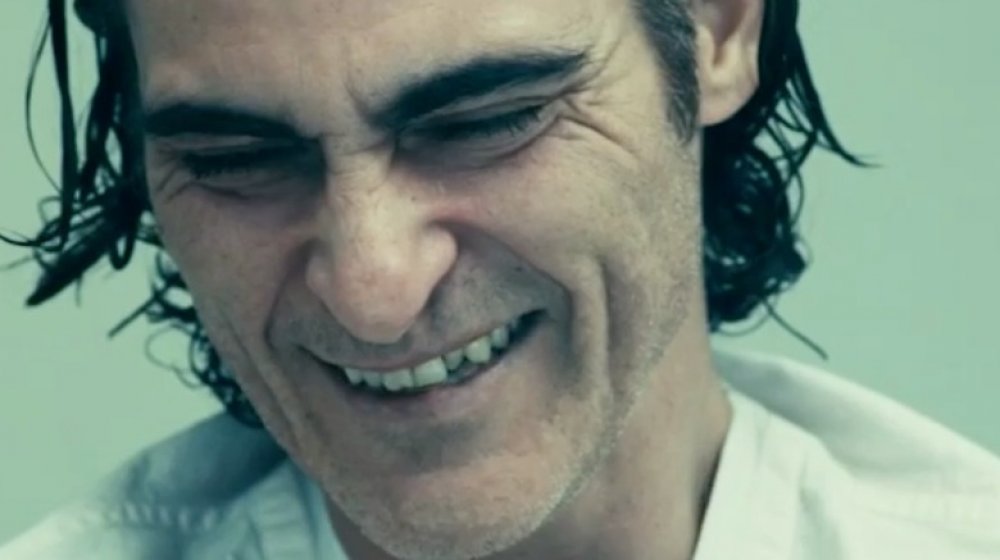Is This How To Tell What's Really Going On In Joker?
Todd Phillips' Joaquin Phoenix-led Joker is one of those films that makes you immediately start discussing it with your fellow viewers once you get done watching it. What did we just see? How much of that was real? Was any of it real? Phoenix's performance blurs the lines between reality and perceived reality — but there may be a few subtle hints that let you know exactly what's going on in this purposely misleading narrative. Phillips and Phoenix crafted a tale that will have you struggling to follow the story — you think you understand what's going on and then suddenly something happens to leave you saying "Wait, what?"
All that misdirection is there on purpose, so don't feel too bad if you got confused along the way, but there are enough subtle clues to tip Phillips' hand, so to speak, as to what's really happening. If you haven't seen Joker, there are spoilers ahead — but you already knew that, right?
How reliable is Joker?
The unreliable narrator is an effective way to reveal plot twists in films and stories, but it doesn't come without controversy. The Usual Suspects uses an unreliable narrator, and one of its common criticisms is that the movie doesn't rely on the narrator being unreliable as much as he's a flat out liar. Other movies and books use an unreliable narrator and people don't even realize it. A movie about a mentally disabled man telling strangers how he met a President, caused Watergate, taught Elvis how to dance, and accidentally made millions when he bought stock in Apple thinking it was a fruit company sounds like the ultimate unreliable narrator tale — it's also the plot of Forrest Gump. Is Gump an unreliable narrator? No one cares! Sometimes the messages get mixed and the style outweighs the substance. Neither of those really apply to Joker in its use of the unreliable narrator.
Joker makes it abundantly clear that Arthur Fleck is an unreliable character; his relationship with neighbor Sophie (Zazie Beetz) is shown to be a ruse; he imagined the entire episode. Early in the film, we are shown that Fleck's imagination flutters when he becomes infatuated with something — he imagines himself in a television studio audience and suddenly called onto the stage after an impromptu laughing fit. In Fleck's mind, talk show host Murray Franklin (Robert De Niro) approves of everything he does and the crowd adores him. This is an early hint of what's happening in the story, and a visual clue that you really need to pay attention to what's going on to see what's real and what's not.
What's the tell?
As any poker player knows, figuring out a tell is critical to winning. What's a tell? Any action by another player that might tip their hand. Figuring out a tell is the difference between being a weekend hack and a pro sitting at the final table. Joker has some tells, and ironically, just like poker, the key is the hands.
Throughout the film, Arthur writes in his journal — which isn't anything remarkable unless you happen to be among the 10 percent of the world that writes left-handed, as Arthur does when he pens his jokes for his standup routine. It's kind of odd, then, that Fleck would use his right hand to hold a cigarette — the vast majority of people will do mundane tasks like this with their dominant hand. It's equally odd that the opening scene of the movie shows Fleck applying his clown makeup with his right hand. And when Arthur attends the comedy show as an audience member, he takes copious notes with his right hand. What's going on here?
You could simply say that Arthur is ambidextrous, or the script supervisor had a rough go of it and no one realized that Joaquin Phoenix kept switching hands throughout the movie, but that would be a bit too convenient, and there are enough things going on to tell you that all the hand jive was on purpose.
The scene after Arthur leaves the comedy show reveals the tell. He sits shirtless at a desk while writing his jokes with his left hand. The doorbell rings and Sophie stands flirting with Arthur, setting up the relationship that we will later learn was all in his head. The Joker's tell is the left-handed scenes. Everything left-hand dominant is all in his head. This scene is the tell for the entire movie.
Phoenix's dexterity sets it up
The part is probably a bit easier to pull off because Joaquin Phoenix is ambidextrous — or at least ambidextrous enough to sign autographs both left-handed and right-handed. Joaquin's abilities certainly sold the believability in the scenes when both hands are shown writing. If the left-handed writing preceded Sophie's flirting scene and we can presume that everything that happens where the left hand is dominant is all in Arthur's head, we can apply Joker's tell to the subway shooting scene (Arthur fires left-handed), his mother's murder (smoking with his left hand), and most notably his live murder of Murray Franklin, which finds him firing the gun left-handed.
Arthur uses his right hand to literally "punch out" after getting fired from his clown job. He also kills Randall by stabbing him with his right hand. During the last scene of the movie — which places him inside the asylum speaking with a therapist — Arthur uses his right hand to smoke a cigarette. These things all happened in the "real world" of the movie.
The misdirections are there
As mentioned earlier, Arthur writes a joke in his journal with his left hand, and immediately after, he chats with Sophie and she flirts with him. Those are all delusions, but in the moments before he writes his joke, we can see Arthur write "mental illness" — with his right hand. Suddenly, the pen switches to his left hand as he returns to his standup material. Within the course of a scene, we flip from reality to delusion. The movie continuously does this, presenting the audience with scenes that are anchored in reality and drenched in delusion. The fundamental definition of delusion is the inability to tell what's real from what's imagined. In a sense, Joker shows the audience what it's like to be delusional because we can't truly tell what's real — but Todd Phillips provides that critical right hand/left hand tell early on as a subtle clue hinting at what's about to unfold.
More clues
Throughout the movie, Arthur flits between reality and delusion. Arthur's coworkers talking about the murders on the train while he cleans out his locker after being fired? Delusion. Gary the kindly dwarf offering Arthur condolences for his release? Reality. Given the context that Arthur can't tell what's real and what isn't, when Gary says "Hey Arthur, I heard what happened, sorry mate!" it's a non-sequitur because Arthur can't tell the difference between what's real and what's imagined. Phillips has already established this at this point by showing us that Arthur thought he was in Murray Franklin's studio audience and got called on stage. After the movie flat-out shows you that Fleck is delusional during that scene, it wants you to figure out the rest on your own. In the coworker scene, we go from reality (Arthur watching Murray Franklin's show with his mother) to delusion (imagining he's in the live studio audience). The only difference is we're not implicitly shown it's delusion — unless we notice which hand is dominant.
What's really real?
Arthur is indeed an unreliable narrator, but Phillips offers enough tells so the movie isn't flat out lying to you — you just have to pay special attention to understand what it's doing. If we follow the hands as an indicator in each scene, the movie's story unfolds as a mentally unstable Arthur loses his job as a clown, kills a former co-worker, and is committed to a mental institution. In his twisted mind, he kills three people on the subway, starts a relationship with his neighbor, causes an uprising among the people of Gotham, and murders his hero/tormentor Murray Franklin on live TV. He also sees Thomas Wayne, a person he blames vicariously through his mother for his ills, murdered — and sees Thomas' son Bruce became another lost soul like Arthur himself. Rewatch Joker and keep an eye on Arthur Fleck's dominant hand; the hands will tell you what's real and what's all in his head.
